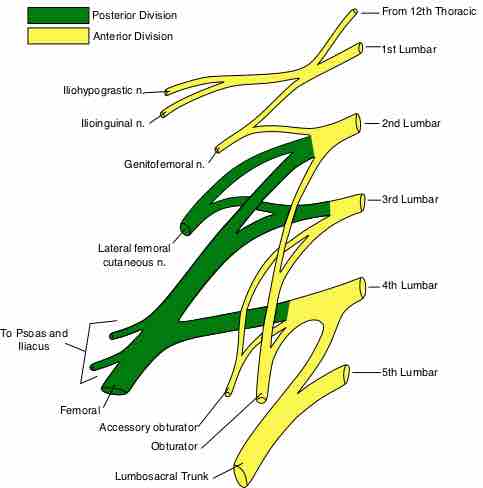A nerve plexus is a network of intersecting nerves; multiple nerve plexuses exist in the body. Nerve plexuses are composed of afferent and efferent fibers that arise from the merging of the anterior rami of spinal nerves and blood vessels.
There are five spinal nerve plexuses—except in the thoracic region—as well as other forms of autonomic plexuses, many of which are a part of the enteric nervous system.
Spinal Plexuses
Cervical Plexus—Serves the Head, Neck and Shoulders
The cervical plexus is formed by the ventral rami of the upper four cervical nerves and the upper part of fifth cervical ventral ramus. The network of rami is located deep within the neck.
Brachial Plexus—Serves the Chest, Shoulders, Arms and Hands
The brachial plexus is formed by the ventral rami of C5–C8 and the T1 spinal nerves, and lower and upper halves of the C4 and T2 spinal nerves. The plexus extends toward the armpit (axilla).
Lumbar Plexus—Serves the Back, Abdomen, Groin, Thighs, Knees, and Calves
The lumbar plexus is formed by the ventral rami of L1–L5 spinal nerves with a contribution of T12 form the lumbar plexus. This plexus lies within the psoas major muscle.
Sacral Plexus—Serves the Pelvis, Buttocks, Genitals, Thighs, Calves, and Feet
The sacral plexus is formed by the ventral rami of L4-S3, with parts of the L4 and S4 spinal nerves. It is located on the posterior wall of the pelvic cavity.
Coccygeal Plexus—Serves a Small Region over the Coccyx
The coccygeal plexus serves a small region over the coccyx and originates from S4, S5, and Co1 spinal nerves. It is interconnected with the lower part of sacral plexus.
In addition, the celiac plexus serves the internal organs, and Auerbach's plexus serves the gastrointestinal tract.
Autonomic Plexuses
- Celiac plexus (solar plexus)—Serves internal organs.
- Auerbach's plexus—Serves the gastrointestinal tract.
- Meissner's plexus (submucosal plexus)—Serves the gastrointestinal tract.

Brachial plexus
Cervical (C5–C8) and thoracic (T1) nerves comprise the brachial plexus, which is a nerve plexus that provides sensory and motor function to the shoulders and upper limbs.

Lumbar plexus
The lumbar plexus is comprised of the ventral rami of the lumbar spinal nerves (L1–L5) and a contribution from thoracic nerve (T12). The posterior (green) and anterior (yellow) divisions of the lumbar plexus are shown in the diagram.